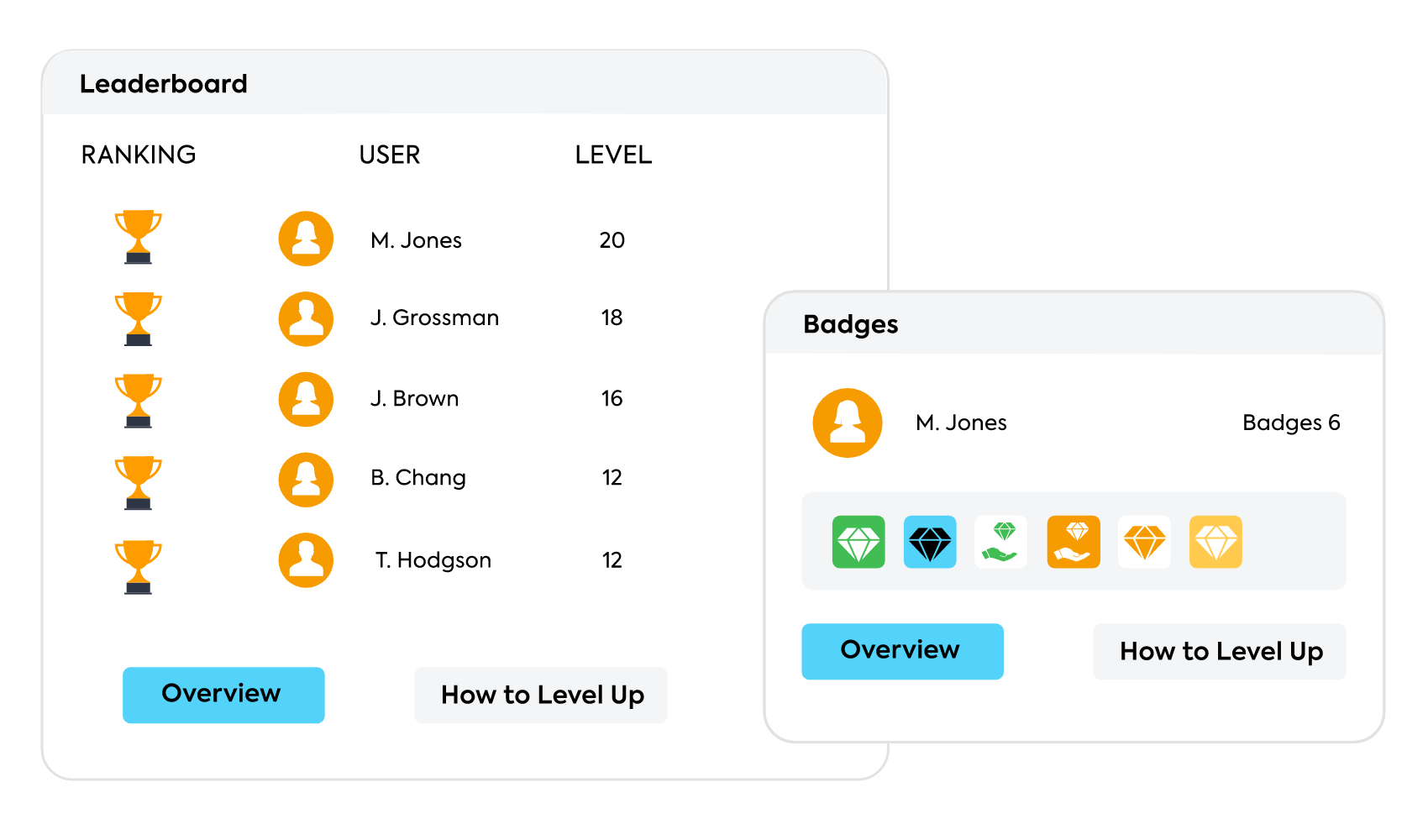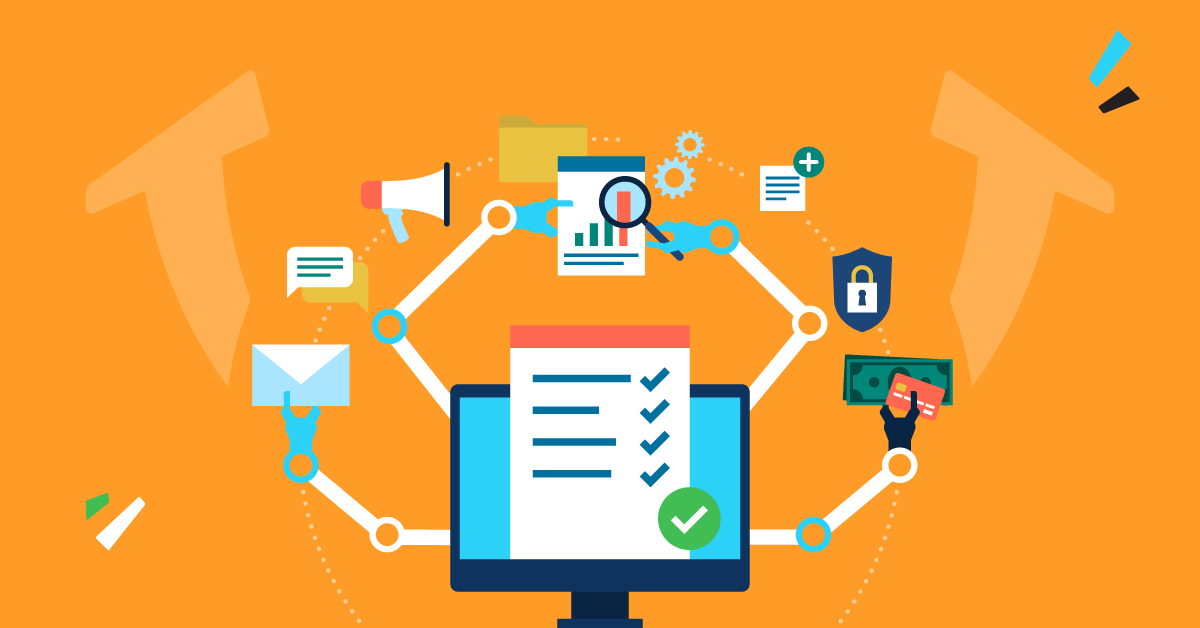Most of us are no strangers to using rewards as motivation. We say things like, “If I finish the laundry today, I can binge-watch three more episodes of my favorite show.” And rewards can get results, at least in the short run. But what about employee development? Are employee incentive programs a good idea when it comes to training?
Between busy work schedules and previous experience with “boring” courses, employees may not always rank training high on their list of priorities. Employee training rewards offer a solution, but they also raise some important questions.
Do training incentives have lasting effects?
Or, are they a quick fix that undermines your real training goals?
In this article, we’ll discuss whether you should reward employees for learning, and if so, how to use rewards to inspire real engagement and learning.
How rewards work
People make decisions about what they do by asking, “What’s in it for me?” There are two kinds of rewards that influence the answer:
- Intrinsic rewards: Sometimes natural rewards are enough to motivate people to action. For example, the inherent benefit of being fit enough to enjoy an active lifestyle might motivate some to stick to their weekly workout plan.
- Extrinsic rewards: Sometimes you need outside help to inspire action. Someone may know exercise will benefit them, but the draw of vegging on the couch after a long day of work is more appealing in the moment. They may attach an external reward—say, stopping for a favorite beverage on the way home from the gym—to get them moving.
These rewards motivate people at work, too. Employees are more productive and engaged when they get praise or incentives for their hard work. The same can be applied to your company training strategy. Rewards can be an effective tool for helping employees get started on the right path.
But only when used correctly.
Rewards could be sending the wrong message
Be thoughtful in your approach to employee incentive programs. If you take the wrong tactics, rewards can actually have a negative impact on learning. For instance, the wrong use of rewards undermines your efforts when they:
- Turn learning into a chore. Automatically including rewards for completing training could communicate the idea that “If I need an incentive, the training must not be worthwhile on its own.”
- Take the focus off of learning. When the prize overshadows the actual task, it takes the focus away from what you’re really trying to achieve. Something like “Employees who get 3 certificates will receive a gift card” may leave employees counting certificates and flying through training to get to the reward.
In either case, employees may finish their training, but without any real engagement. They likely won’t retain what they learned, and when it’s time to do more training, they’ll still be dragging their feet.
Forget about boring courses or presentations that no one attends
Build engaging training programs in just a few clicks with TalentLMS.
The training platform that users consistently rank #1.
When do employees really need (or want) training incentives?
According to a foundational study, companies showed a 44% increase in team performance with the right incentive program.
The key phrase here is “the right incentives.”
Not all rewards motivate equally. And not all are a good fit for the situation. For instance, with mandatory training like onboarding courses or content on cybersecurity, employees know it needs to happen. And with training that helps employees grow their skills and careers, people probably already recognize the natural benefits.
In these cases, a reward won’t necessarily motivate people. They already have reasons to finish their training.
However, incentives can be valuable when the intrinsic rewards are not strong enough to engage employees on their own. For example, if employees have to take the same (or a similar) course on cybersecurity every year, a small prize or an internal competition could make the process more fun.
The key to success is knowing how to implement learning incentives in a way that is helpful for learners.
Learning should be the end goal of employee incentive programs
If you want training incentives for employees to be useful, make sure the focus is always on the most important intrinsic reward: learning.
Whether it’s compliance training or an optional course on how to build assertiveness, employees should know how training will help them. The answer to “What’s in it for me?” shouldn’t be a reward, but an actual career benefit they’ll get.
Rewards should help you make the connection between training and the results that will add value to employees and their careers.
Here are a few tips for using employee incentives to support learning:
1. Communicate the value of training first and foremost
It’s ok to promote an incentive program for training to get people excited. But be sure you advertise the value of training as the primary message.
If you send out an email announcing a new course, start with the purpose of the training. Share why this training is happening and how it’ll help employees.
For example, “This week’s compliance training will prepare you to handle changes in policies and processes that will be in place after the first quarter. This course is a great way to get up to speed quickly in your downtime.” Then add information about the incentive.
Help employees see incentives as a bonus, not the main reason for finishing their training.
2. Make the content relevant and engaging
If you want people to be eager about training, make sure the actual content is informative, up-to-date, and engaging.
If you give employees a long technical guide on cybersecurity and follow up with a test, it’s possible no reward will be motivating enough to get them through it. Some may focus on completing the test and getting the reward, but with no guarantee that they’ll actually learn anything.
Instead, use best practices to get people to interact with the course and increase their learning.
- Vary the types of media you use. Replace text-heavy screens with videos or infographics.
- Include practice. Build in quizzes and hands-on exercises that let people put the skills into practice.
- Add some competition. Gamification is a good way to make training more enticing. Add leaderboards and badges or points for finishing key tasks. The desire to keep up with their fellow learners will prompt people to come back to continue a course.
These tactics will engage employees in deep thinking about the content and motivate them to complete their training.

Make training fun with TalentLMS!
Have your teams engage in friendly competitions and share badges and awards.
Easy to set up, easy to use, easy to customize.
3. Attach the reward to the appropriate actions
Rewarding people for completing their training will likely get you lots of click-throughs to the end. But that doesn’t necessarily mean people are learning along the way.
Instead of attaching a reward to a specific outcome (completing the course, passing a quiz), consider linking it to actions that lead to the results you want.
For example, reward learners when they complete an assignment to teach what they’ve learned to another person. Or, when they successfully replicate a difficult procedure. Rewarding helpful behaviors will drive the ultimate result: real learning and skill application.
4. Make the reward proportionate
Too big an incentive overshadows the task itself and isn’t sustainable over time. For instance, rewarding yourself with a latte after a good workout can be the little extra push that helps you do something you know you should. Rewarding yourself with a sports car after one workout won’t have that same effect. Future workouts may be a letdown without such a big reward.
It’s the same with employee training rewards. Rewards can be motivating and help people get started. But keep them equal to the size of the task. You want the reward to be that little push that gets them started and enhances the natural benefits they’ll get.

Use training incentives to create a learning partnership
Done well, rewards are a great way to motivate learners. They’re also a way to show people you care about their career development and success. When you make learning the priority, employees will understand why training matters, and they’ll be an active part of your training strategy’s success.
Rewards and employee incentive programs can help you create a partnership that enhances learning. They show employees you value the efforts they put in. And when they know you care enough to invest in their futures, your employees will be happier and more productive long-term.



